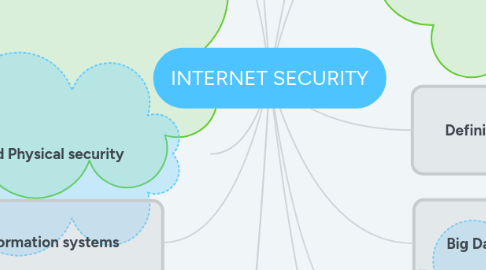INTERNET SECURITY
by Martin Fernandez


1. Types of Computer Security
1.1. ACTIVE SECURITY
1.1.1. ACCESS CONTROL
1.1.2. ENCRYPTION
1.1.2.1. Cryptography
1.1.3. COMPUTER SECURITY SOFTWARE
1.1.4. DIGITAL SIGNATURES AND CERTIFICATES
1.1.5. SECURE PROTOCOLS
1.2. PASSIVE SECURITY
1.2.1. CLEANING TOOLS
1.2.2. BACKUP COPIES
1.2.3. UNIQUE POWER SUPPLY SYSTEMS (UPS)
1.2.4. NAS DEVICES.
1.2.5. REDUNDANT SYSTEMS
2. Logical security and Physical security
2.1. PHYSICAL SECURITY
2.2. LOGICAL SECURITY
3. Security of people and information systems
3.1. Security of information systems
3.1.1. Security of people
4. Internet of Things
5. Protection of Networks
5.1. Firewall
5.2. Virtual Private Networks (VPN)
5.2.1. Remote access VPN
5.2.2. Site-to-site VPNs
6. Security Threats
6.1. Virus
6.1.1. How do they work?
6.1.1.1. Protection
6.2. Spyware
6.2.1. How do they work?
6.2.1.1. Protection
6.3. Trojan horses
6.3.1. How do they work?
6.3.1.1. Protection
6.4. Worms
6.4.1. How do they work?
6.4.1.1. Protection
6.5. Scareware
6.5.1. Protection
6.6. Adware
6.6.1. Protection
6.7. Hackers
6.8. Crackers
6.8.1. Crackers vs Hackers
6.9. Pharming
6.9.1. Protection
6.10. Cookies
6.10.1. Protection
6.11. Hoaxes
6.12. Phising
6.12.1. Protection

